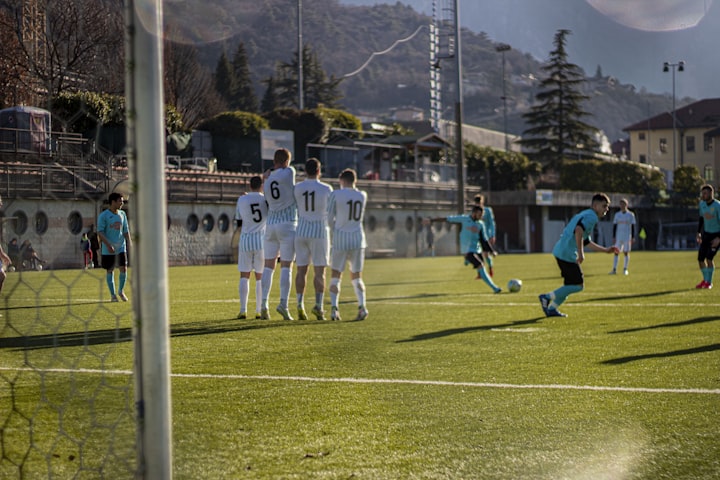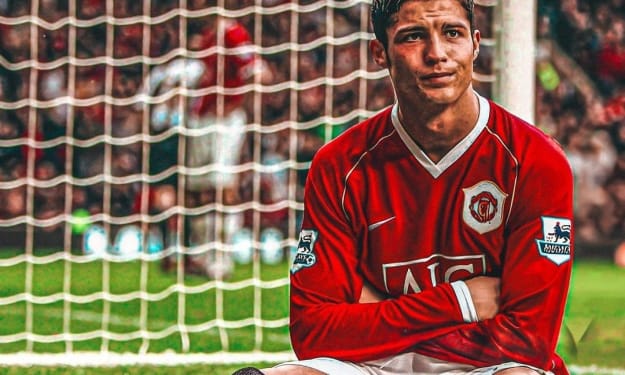How to take an unstoppable free kick?????
Magnus Effect

In a highly anticipated 1997 match between France and Brazil, an extraordinary event unfolded that would forever etch itself into the annals of football history. The protagonist of this awe-inspiring moment was none other than a young Brazilian player named Roberto Carlos. With the game in full swing, Carlos found himself preparing for a 35-meter free kick, an opportunity fraught with challenges. There was no direct line to the goal, but undeterred by the seemingly impossible odds, Carlos decided to embark on a daring endeavor that would defy expectations.
As the anticipation mounted and spectators held their breath, Carlos summoned his skill and unleashed a mighty strike upon the ball. The impact launched it into the air, propelling it wide of the players and seemingly veering away from the intended trajectory. However, in an astonishing turn of events, just before the ball could succumb to the confines of the touchline and go out of bounds, it abruptly hooked to the left. With a graceful curve, it soared majestically into the goal, leaving everyone in sheer disbelief and awe.
Now, one might wonder: what force or mechanism enabled the ball to swerve and accomplish one of the most magnificent goals in the history of the sport? To unravel this mystery, we delve into the realm of physics and the principles encapsulated in Newton's first law of motion. According to this fundamental law, an object will continue moving in the same direction and at the same velocity until acted upon by an external force. Carlos's kick bestowed both direction and velocity upon the ball, but the key to its swerve lay in the spin he imparted to it.
When Carlos made contact with the ball, he strategically placed his kick at the lower right corner, propelling it high and to the right while simultaneously causing it to rotate around its axis. As the ball embarked on its trajectory, slicing through the air with determination, the surrounding atmosphere exerted its influence. The airflow on both sides of the ball began to impact its journey, imposing a resistive force that sought to slow its progress.
On one side of the ball, the air moved in a direction opposite to its spin, resulting in increased pressure. Conversely, on the other side, the air moved in the same direction as the spin, creating an area of lower pressure. This divergence in air pressure gave rise to a remarkable phenomenon known as the Magnus effect, which was instrumental in the ball's mesmerizing curve. The differential pressure acted as an external force, causing the ball to deviate from its initial path and curve towards the zone of lower pressure.
The Magnus effect is not exclusive to football; its influence can be observed in various sports involving spinning objects. Whether it be golf balls, frisbees, or baseballs, the spin imparts a crucial pressure differential on the surrounding airflow, resulting in curving trajectories. This wondrous principle was first documented by the brilliant Sir Isaac Newton, who incidentally noticed the effect while playing a game of tennis as far back as 1670.
The capacity to achieve such curved shots, often colloquially referred to as banana kicks, adds a touch of artistry to the game of football. However, executing them with the precision necessary to navigate around defensive walls and find the back of the net is a formidable challenge. It requires a delicate balance of factors such as height, speed, and spin to achieve the desired trajectory and elude the vigilant defenders.
Interestingly, the same laws of physics that enable the Magnus effect also raise an intriguing question: could one hypothetically kick a ball with such force that it boomerangs back to its origin? Regrettably, the answer is no. Even if the ball miraculously avoided disintegration upon impact and evaded all obstacles, it would succumb to the relentless influence of air resistance. As the ball
gradually decelerates, the angle of its deflection would increase, causing it to spiral into smaller and smaller circles until eventually coming to a halt. Moreover, achieving such a spiral would necessitate spinning the ball over 15 times faster than Carlos's immortal kick, a feat that lies beyond the realms of human capability.
The story of Roberto Carlos's astonishing goal serves as a testament to the captivating intersection of sports and science. It exemplifies the elegance and complexity of the beautiful game while shedding light on the underlying physics that govern its most extraordinary moments. Carlos's remarkable achievement will forever be etched in the memories of football enthusiasts worldwide, a testament to the indomitable spirit of athletes and the magic that unfolds on the field.





Comments
There are no comments for this story
Be the first to respond and start the conversation.